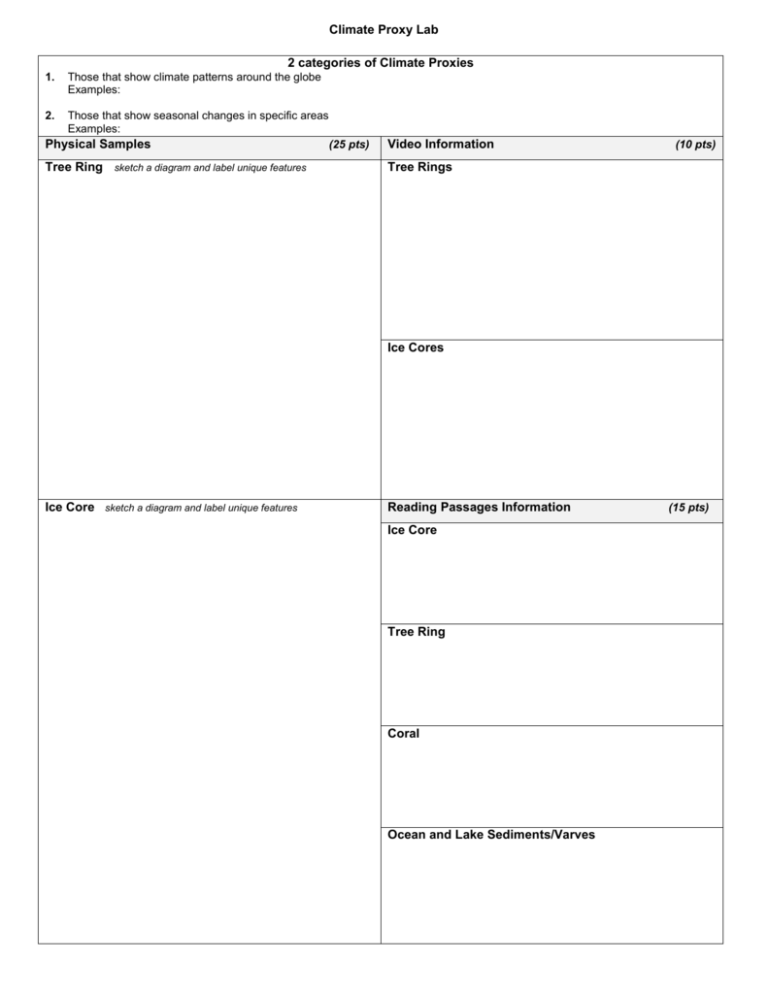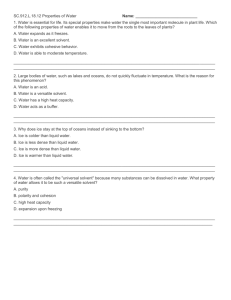Climate Proxy Lab
advertisement

Climate Proxy Lab 2 categories of Climate Proxies 1. Those that show climate patterns around the globe Examples: 2. Those that show seasonal changes in specific areas Examples: Physical Samples Tree Ring sketch a diagram and label unique features (25 pts) Video Information (10 pts) Tree Rings Ice Cores Ice Core sketch a diagram and label unique features Reading Passages Information Ice Core Tree Ring Coral Ocean and Lake Sediments/Varves (15 pts) Climate Proxy Lab 2 categories of Climate Proxies Those that show climate patterns around the globe Examples: ice cores, ocean sediment (varves) Those that show seasonal changes in specific areas Examples: tree rings, coral bands Physical Samples Video Information Highlight the information you think is most important Tree Ring Use the ring to draw a diagram of your tree ring. Draw lines from your diagram to feature labels Growth rings Ice Cores Bubbles in the ice have ancient air in them Ice cores are taken from Greenland and North and South Pole Scientists use ice cores to track the amount of carbon dioxide that used to exist in the atmosphere. Forest Fire Dry Year (little rainfall) Tree Rings Can be used by historians as well Annual rings give information of rain fall and stream flow Depending upon the species, tree ring information can be up to 1,000 years. Year with lots of rainfall Ice Core Use the blank diagram to draw a diagram of your ice core. Draw lines from your diagram to feature labels Reading Passages Information Highlight the information you think is most important Ice Core Come from compacted snowfall in glaciers and ice caps Have more information than other proxies Air bubbles have ancient air in them Volcanic ash Tree Ring Rings represent one year of growth Wide rings = wet years, narrow rings = drought Can be used to track 1,000 years Have information on precipitation and temperature Pollen Air Bubbles Coral Coral has yearly growth rings like trees Have information about the ocean water at the time the ring was formed Ocean and Lake Sediments/Varves Tons of sediment falls on ocean bottom each year Study color, characteristics and contents of the sediments Information about the climate and how much ice existed 1. Compare and contrast the images of the climate proxies with rock layers. (25 pts) tree ring Ocean and lake sediments/varve ice core coral bands rock layers 2. Compare and contrast the history revealed by ice cores and rock layers. Make sure your explanation is complete. (25 pts)









